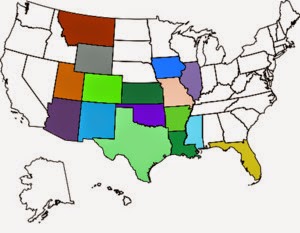This left me with a few challenges to work around. I am building a couch/bed/hinged storage box.
I have a rough sketch of the project, without measurements. I measure and cut one piece of lumber at a time, fitting it together. I started this more than a month ago and this week have added a few more pieces. It is not really taking long, I have only worked on it about 3 days during this time, maybe an hour each time. I buy a few pieces of lumber each time I go into town. I am using a hand saw with a miter box to cut the 1 x 4's.
Originally, I asked my son-in law, Karl, to help me - I did not think I would be able to do this by myself. I find I am enjoying doing the work myself. I may still need his help with some of it - I am trying to do as much as possible on my own. I hope he is not upset if I don't need his help.
I could have used another pair of hands
to attach this long board (72 1/2" long).
Instead, to support it, I set it on a small electric heater
to attach this long board (72 1/2" long).
Instead, to support it, I set it on a small electric heater
and a folded up piece of paper - some wood glue and duct tape
to hold the corner before I could add some screws
I am sure there will be some carpenters laughing
and shaking their head at how I am doing this.
Some of the things to work around
the electric for the outside outlet
the slanted piece of wood is part of the original construction
this is what I found when I removed the dinette bench
this is what I found when I removed the dinette bench
there is a little sticker upside down on this piece of wood
it says, LINEFILL and a bunch of numbers
and the date 10/2/2007
This corner is where the furnace was.
The curved area (covered with Reflectix)
is a cut-out on the side of the cabinet over the wheel well.
The vents for the furnace ran under this cabinet.
I will frame out around this propane pipe
and make a wall to protect the pipe.
I should have it framed out soon, not sure if I have enough
lumber or if I will need to buy another piece.
Next week I will be going to San Antonio
with Diane and Karl for 3 days,
so it will be awhile before I get around to adding
the plywood top and front.
it says, LINEFILL and a bunch of numbers
and the date 10/2/2007
This corner is where the furnace was.
The curved area (covered with Reflectix)
is a cut-out on the side of the cabinet over the wheel well.
The vents for the furnace ran under this cabinet.
I will frame out around this propane pipe
and make a wall to protect the pipe.
I should have it framed out soon, not sure if I have enough
lumber or if I will need to buy another piece.
Next week I will be going to San Antonio
with Diane and Karl for 3 days,
so it will be awhile before I get around to adding
the plywood top and front.














